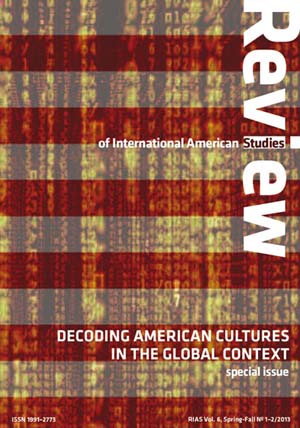WHO IS INDIAN ENOUGH? The Problem of Authenticity in Contemporary Canadian and American Gone Indian Stories
WHO IS INDIAN ENOUGH? The Problem of Authenticity in Contemporary Canadian and American Gone Indian Stories
Author(s): Judit Ágnes KádárSubject(s): Language and Literature Studies, Studies of Literature, Other Language Literature, Cultural Anthropology / Ethnology
Published by: Wydawnictwo Uniwersytetu Śląskiego
Summary/Abstract: Readers of Canadian literature may recognize the presence of what Margaret Atwood has called the ‘Grey Owl Syndrome’ (Atwood, 1995: 35–61) often addressed in post-colonial writing. One discerns a similar trend in American literature as well. However, interdisciplinary critical attention devoted to the problem of transculturation, its background, process and impact so far has been limited. There are well-known treatises on playing (the white man’s) Indian, for instance by Robert Berkhofer, James Clifton, Terry Goldie and Daniel Francis. Powerful Native-born cultural critics like Philip J. Deloria and Ward Churchill approached the topic from ethnic and political perspectives. The Canadian John Berry has explored ethnic change from a cross-cultural psychological perspective which I have also adopted—along with other psychological approaches—in my extended studies. However, the problem of authenticity and authentication in the transculturation presented by literary texts has not yet been given the critical attention it merits.Among other critics, Deloria claims that authenticity is a central problem of all passing experiences. As a part of a larger research project on recent North-American indigenization novels, I focus here on some contemporary 'going Indian' stories that present various aspects of ethnic /trans-cultural shape-shifting and the problem of authenticity in particular. The non-Native Canadian Philip Kreiner’s "Contact Prints" (1987), the environmentalist and ‘(Mostly) White Guy’ Robert Hunter’s "Red Blood" (1999), and the partly Ojibwa Luise Erdrich’s "The Painted Drum" (2005) depict three different types of passing/Othering experienced by our contemporaries in the framework of a modernist, a popular, and postmodernist piece of fiction respectively. Whether it is someone recognizing the mercantile power of Indianness, the spiritual force of Native culture or a deeper level of genetic, spiritual and mythological identification, the core/locus of identity, the cultural umbilical cord that someone recognizes as an essential need, the reader is invited to explore, on the one hand, the difference between masking, superficial identification and acculturation/integration, even values attached to mainstream and ethnic minority culture, and on the other hand, his/her own identity concept and cultural attachments.
Journal: Review of International American Studies
- Issue Year: 6/2013
- Issue No: 1-2
- Page Range: 187-213
- Page Count: 27
- Language: English

